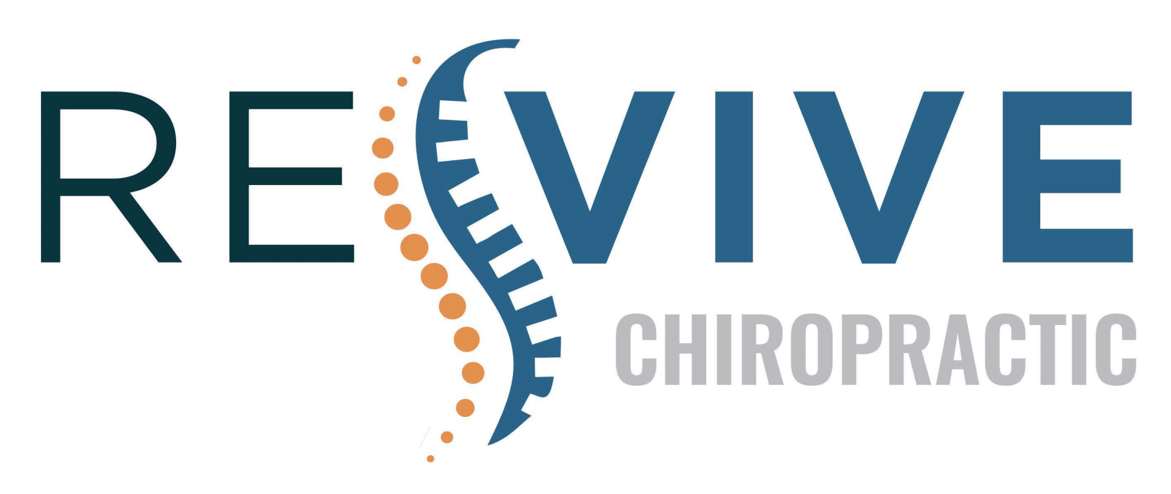You might be surprised to learn that spinal alignment could play a significant role in alleviating your headaches. Many people experience relief after chiropractic adjustments, which aim to correct misalignments in the spine, particularly in the neck. These adjustments can reduce nerve irritation and tension, potentially leading to fewer and less intense headaches. But how exactly does this process work, and are there other factors at play? Exploring the connection between spinal health and headache relief could reveal more than you expect.
Understanding Headaches
Headaches are often more than just a nuisance; they can signal underlying issues in your body, particularly related to spinal alignment. When you experience a headache, it's important to pay attention to its type and symptoms. Different headaches can stem from various causes, including tension, migraines, and cluster headaches. Knowing the difference can help you identify what's going on with your body.
Tension headaches, for instance, often feel like a tight band around your head. They can be triggered by stress, poor posture, or muscle tension in your neck and shoulders. On the other hand, migraines are usually more intense and may come with nausea, light sensitivity, or even aura symptoms. Recognizing these signs can guide you to the right treatment, whether it's over-the-counter medication, lifestyle changes, or seeking professional help.
You might also want to reflect on your daily habits. Factors like dehydration, irregular sleep patterns, and poor diet can contribute to headaches. Keeping a headache diary can help you track your triggers and symptoms, allowing you to make necessary adjustments in your routine.
Ultimately, understanding what's causing your headaches is vital. By taking the time to analyze your patterns and symptoms, you can work towards finding effective solutions.
The Role of Spinal Alignment
Your spinal alignment plays an essential role in how you experience headaches. Misalignments can lead to tension and pain, while proper alignment can alleviate discomfort.
Understanding the benefits of chiropractic adjustments and how posture impacts your overall well-being can make a significant difference in managing your headaches.
Spinal Structure and Headaches
Proper spinal alignment plays an essential role in preventing and alleviating headaches. When your spine is in its ideal position, it helps maintain proper communication between your brain and body. Misalignments can lead to nerve irritation and muscle tension, contributing to headache onset.
Your cervical spine, which consists of the neck vertebrae, is particularly significant. If it's misaligned, it can compress nerves and restrict blood flow to the head. This disruption often results in tension headaches or migraines.
Additionally, poor posture—like slouching at a desk—can exacerbate these issues, putting extra strain on your neck and back.
When you prioritize spinal health, you may notice a reduction in the frequency and intensity of headaches. Focusing on maintaining good posture, engaging in regular physical activity, and incorporating stretching exercises can support spinal alignment.
Understanding the connection between your spinal structure and headaches empowers you to take proactive steps. By being mindful of your spinal alignment and addressing any discomfort early on, you're more likely to keep headaches at bay and enhance your overall quality of life.
Chiropractic Adjustments Benefits
Chiropractic adjustments can considerably enhance spinal alignment, addressing the issues that often lead to headaches. By realigning your spine, these adjustments help alleviate tension and pressure that may contribute to headache pain.
You'll likely notice improvements not only in your headaches but also in your overall well-being.
Here are some key benefits you might experience from chiropractic adjustments:
- Reduced Headache Frequency: Regular adjustments can help decrease how often you experience headaches, providing you with more pain-free days.
- Improved Range of Motion: Enhanced spinal alignment can lead to better mobility, making daily activities easier and reducing strain that might trigger headaches.
- Stress Relief: Chiropractic care often promotes relaxation, which can indirectly help manage headache triggers like stress and tension.
Incorporating chiropractic adjustments into your wellness routine may just be the missing piece in your quest for headache relief.
By focusing on spinal health, you're not only targeting the source of your discomfort but also fostering a healthier lifestyle overall.
Posture Impact on Pain
Posture plays an essential role in your overall health and can greatly impact pain levels, especially when it comes to spinal alignment. When you slouch or adopt an unnatural position, you place unnecessary stress on your spine and surrounding muscles. This tension can lead to discomfort, not just in your back but also in your neck and head.
If you find yourself constantly leaning forward or hunching over your desk, you may notice an increase in tension headaches. Poor spinal alignment can disrupt the natural curve of your spine, causing muscles to overwork and strain. By improving your posture, you can alleviate this tension, reducing the frequency and intensity of headaches.
You don't have to make drastic changes overnight. Start by being mindful of your posture throughout the day. Sit up straight, keep your shoulders back, and make certain your workstation is ergonomically friendly.
Simple adjustments can lead to significant improvements in spinal alignment and overall well-being. Ultimately, cultivating good posture isn't just about looking confident; it's about maintaining your health and minimizing pain.
Prioritizing spinal alignment can help you feel better and function at your best.
How Spinal Alignment Affects Nerves
When your spine is properly aligned, it can relieve nerve compression, allowing your body to function more smoothly.
This alignment also improves blood flow, which is essential for delivering oxygen and nutrients to your muscles and tissues.
Nerve Compression Relief
Proper spinal alignment plays an essential role in relieving nerve compression, which can contribute to headaches. When your spine is misaligned, it can put pressure on the nerves that run through your neck and back. This pressure often leads to pain, discomfort, and even headaches.
By ensuring your spine is well-aligned, you can alleviate this nerve compression and reduce headache frequency.
Here are a few ways proper spinal alignment helps relieve nerve compression:
- Reduces tension: When your spine is aligned, it minimizes muscle strain, which in turn reduces tension in the neck and shoulders.
- Improves nerve function: Proper alignment allows nerves to transmit signals effectively, reducing the likelihood of pain and discomfort.
- Enhances mobility: A well-aligned spine promotes better movement and flexibility, which can help prevent the onset of headaches caused by stiffness.
Improved Blood Flow
Maintaining good spinal alignment not only relieves nerve compression but also greatly enhances blood flow throughout your body. When your spine is properly aligned, it helps your nervous system function effectively. This effective function allows for better communication between your brain and the rest of your body, ensuring that all systems work in harmony.
Proper alignment encourages the arteries and veins to remain unobstructed, allowing blood to circulate freely. When blood flow improves, oxygen and nutrients reach your tissues more effectively, which is essential for healing and overall well-being. You may find that improved circulation can reduce the frequency and intensity of headaches, as the brain receives the necessary nutrients and oxygen it needs to function properly.
Additionally, when your body is well-aligned, the muscles surrounding the spine can relax, reducing tension that often contributes to headaches.
Types of Headaches and Their Causes
Headaches can be classified into several types, each with distinct causes and characteristics. Understanding the type of headache you're experiencing can help you identify the right approach to relief. Here are three common types you might encounter:
- Tension Headaches: These are the most prevalent type and often stem from stress, poor posture, or muscle tension. You might feel a dull, aching sensation, typically on both sides of your head, along with tightness around your forehead or neck.
- Migraine Headaches: Migraines can be debilitating and are often accompanied by other symptoms like nausea, vomiting, or sensitivity to light and sound. Triggers can vary widely, including hormonal changes, certain foods, and environmental factors. If you've ever experienced a throbbing pain on one side of your head, it could be a migraine.
- Cluster Headaches: Though less common, cluster headaches are intense and occur in cycles. You might experience sharp pain around one eye or side of your head, often accompanied by nasal congestion or tearing. These headaches can happen multiple times a day over a period of weeks or months.
Recognizing these types is essential for managing your headaches effectively. If you can pinpoint the type and its cause, you can take proactive steps to alleviate the pain and prevent future episodes.
Always consider consulting a healthcare professional for personalized advice and treatment options.
Chiropractic Care for Headaches
Many people suffering from tension, migraine, or cluster headaches seek relief through various treatments, and chiropractic care has emerged as a popular option. If you've been dealing with persistent headaches, you might find that chiropractic adjustments could provide the relief you're looking for. Chiropractors focus on spinal alignment, believing that correcting misalignments can reduce tension and improve overall function.
During your first visit, the chiropractor will evaluate your spine and posture, discussing your headache history and any other symptoms you may have. This thorough assessment helps them determine the best course of action tailored to your needs. You'll likely receive spinal adjustments aimed at restoring proper alignment, which may alleviate nerve pressure and reduce muscle tension, potentially leading to fewer headaches.
Chiropractic care isn't just about adjustments. Your chiropractor may also recommend exercises, stretching routines, or lifestyle changes to support your treatment. These recommendations can help strengthen your neck and back muscles, promoting better posture and reducing the likelihood of future headaches.
Many patients report feeling relief from headaches after just a few sessions, but it's crucial to remember that results can vary. Some people experience significant improvement quickly, while others might need more time to notice changes.
Evidence Supporting Spinal Adjustments
Research increasingly supports the effectiveness of spinal adjustments in alleviating headache symptoms. Numerous studies have shown that by realigning your spine, you can potentially reduce the frequency and intensity of headaches.
If you're struggling with chronic headaches, considering chiropractic care might be worth it.
Here are a few key points that highlight the evidence supporting spinal adjustments:
- Clinical Studies: Various clinical trials have demonstrated that patients receiving spinal adjustments reported fewer headaches and improved overall well-being. These studies often involve control groups, making the results more reliable.
- Pain Relief Mechanism: Spinal adjustments can improve blood flow and reduce nerve irritation. This alleviates tension in your neck and upper back, common culprits in headache development.
- Patient Testimonials: Many individuals who've undergone chiropractic care share their positive experiences, noting significant reductions in headache frequency. Their stories often reflect a newfound quality of life and increased productivity.
Alternative Therapies for Relief
Finding relief from headaches can sometimes require exploring alternative therapies beyond traditional methods. These therapies can offer you new ways to manage pain and improve your overall well-being.
One popular option is acupuncture, which involves inserting thin needles into specific points on your body. Many people find that this ancient practice can reduce headache frequency and intensity by promoting relaxation and improving circulation.
Another alternative therapy to reflect on is massage therapy. By targeting tension in your neck, shoulders, and head, a skilled massage therapist can help alleviate pain and promote relaxation. Regular sessions might even help you identify and address muscle tightness that contributes to your headaches.
You might also explore herbal remedies, such as feverfew or butterbur. These herbs have been found in some studies to reduce headache frequency and severity. However, it's crucial to consult with a healthcare professional before starting any new supplement to verify it's safe for you.
Additionally, mindfulness and meditation practices can be beneficial. These techniques help you manage stress, which is a common trigger for headaches. By incorporating mindfulness exercises into your daily routine, you can build resilience against headache triggers.
Finally, chiropractic care can also be an alternative worth reflecting on. Many individuals report significant relief from headaches after spinal adjustments, which can improve alignment and reduce tension in the body.
Incorporating these alternative therapies into your routine may provide you with the relief you've been seeking. Remember to consult with a healthcare professional to find the best approach for your specific needs.
Lifestyle Changes for Headache Prevention
Making lifestyle changes can greatly contribute to preventing headaches and improving your overall quality of life. You don't need to make drastic alterations; small adjustments can have a significant impact.
Here are a few practical strategies to incorporate into your daily routine:
- Stay Hydrated: Dehydration can trigger headaches, so aim to drink enough water throughout the day. Keeping a water bottle handy can remind you to sip regularly.
- Manage Stress: Stress is a common headache culprit. Incorporate stress-reducing practices like meditation, yoga, or deep-breathing exercises.
Taking short breaks during your day can also help you recharge and minimize tension.
– Maintain a Regular Sleep Schedule: Inconsistent sleep can lead to headaches. Aim for 7-9 hours of quality sleep each night.
Establishing a calming bedtime routine can signal your body that it's time to wind down.
When to Seek Professional Help
Recognizing when to seek professional help for headaches is vital to ensuring your health and well-being. While occasional headaches are common and often manageable with lifestyle changes, certain symptoms should prompt you to consult a healthcare provider. If your headaches occur frequently or worsen over time, it's time to schedule an appointment.
You should also seek help if your headaches are accompanied by additional symptoms, such as vision changes, nausea, vomiting, or difficulty speaking. These could signal a more serious underlying condition that needs immediate attention. If you experience sudden, severe headaches that feel different from your usual ones, don't hesitate to seek care, as this may indicate a medical emergency.
Another sign to watch for is if over-the-counter medications aren't providing relief. Relying on them too often can lead to rebound headaches, where the pain returns as the medication wears off. If you find yourself needing to take pain relievers regularly, consider discussing this with a professional.
Additionally, if your headaches interfere with daily activities, work, or social life, it's important to address the issue. A healthcare provider can help identify potential triggers, including spinal alignment issues, and offer treatment options tailored to your needs.
Conclusion
In summary, spinal alignment can play an essential role in alleviating headaches. By addressing misalignments, you can reduce nerve irritation and muscle tension, leading to fewer and less intense headaches. Chiropractic care offers effective adjustments, and when combined with lifestyle changes, it can greatly improve your overall well-being. If you're struggling with headaches, consider exploring spinal adjustments and other therapies. Remember, seeking professional help is always a smart choice when headaches persist.



